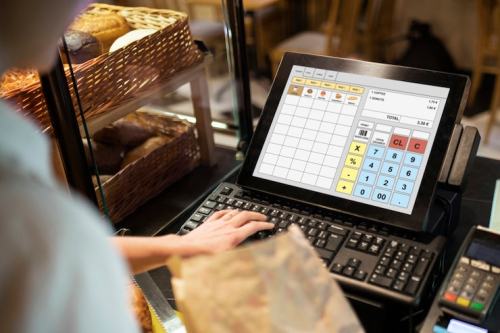From cozy family-run diners to expansive franchise networks, the point-of-sale (POS) system serves as the operational cornerstone. Far beyond the days of simple cash registers, today’s POS platforms are sophisticated hubs managing mobile orders, inventory, and customer loyalty programs with remarkable precision. With a competitive market featuring industry leaders like Toast, Square, and Lightspeed, selecting the ideal system is a critical decision. This comprehensive guide to Restaurant POS Comparison explores the standout features, potential challenges, and real-world successes of top systems, empowering restaurant owners to make informed choices in 2025.
The Evolution of POS: Beyond Transactions
The restaurant industry operates under intense pressure, with tight margins and fierce competition demanding unparalleled efficiency. A 2024 market analysis projects the global restaurant software market to grow from $3.4 billion to $7.42 billion by 2031, driven by an impressive 11.8% CAGR. This surge is fueled by restaurateurs adopting cloud-based solutions to streamline operations and reduce costs. These modern platforms excel in both front-of-house tasks, such as order processing and payments, and back-of-house functions, including inventory and staff management.
Cloud-based POS systems are at the forefront, offering real-time data access and seamless updates without reliance on bulky on-premises hardware. Additionally, artificial intelligence (AI) is transforming these platforms, providing predictive analytics for sales trends and inventory optimization. The rise of omnichannel dining encompassing dine-in, takeout, and delivery has made integration across channels essential. As consumer preferences shift toward digital wallets and contactless payments, POS systems are evolving to meet these demands, making them indispensable for enhancing customer experiences and boosting profitability.
Key Trends Shaping the POS Landscape
Several transformative trends are redefining restaurant POS systems. Cloud-based platforms lead the charge, enabling owners to monitor sales or adjust menus remotely, a critical advantage for multi-location operations. AI-driven tools are gaining traction, offering insights to predict peak hours or identify slow-moving inventory. Omnichannel integration is now a must, with the restaurant POS software market valued at $9.44 billion in 2023 and projected to reach $17.88 billion by 2030, growing at a 6.88% CAGR.
Automation is another game-changer. Kitchen display systems (KDS) synchronize orders in real time, minimizing errors, while self-checkout kiosks accelerate service in quick-service settings. Payment processing has also advanced, with POS terminals supporting digital wallets and contactless cards, a trend accelerated by the pandemic’s emphasis on touch-free transactions. However, challenges like data privacy and PCI compliance remain critical, as cyber threats continue to escalate.
Meet the Market Leaders
The POS market is dominated by a handful of robust systems, each tailored to specific restaurant needs. Here’s a closer look at the top contenders:
- Toast: A cloud-based powerhouse, Toast is ideal for multi-location quick-service restaurants. Starting at $69/month, it offers robust loyalty programs and integrations with delivery platforms like DoorDash, though hardware costs can add up.
- Square for Restaurants: Priced from $0 to $60/month, Square’s mobile-friendly POS is a favorite among small independents. Its seamless payment ecosystem is a strength, but scalability is limited for larger chains.
- Lightspeed: Priced between $89 and $289/month, Lightspeed excels in high-volume settings like bars, with strong inventory and tab management. However, its complexity may challenge beginners.
- TouchBistro: Focused on full-service restaurants, TouchBistro offers intuitive table management for $69 to $399/month. Its cloud capabilities lag behind competitors like Toast.
- Revel: An enterprise-grade option starting at $99 highly customizable but has a steep learning curve.
- Clover: With flexible hardware and pricing from $14.95 to $94.95/month, Clover suits small to mid-sized venues but lacks advanced analytics.
Real-world applications highlight their impact. A Brooklyn bistro uses Square’s mobile POS to process tableside payments, reducing wait times. A taco chain with multiple locations leverages Toast to centralize sales data, increasing customer engagement. A Chicago sports bar relies on Lightspeed to monitor liquor inventory, curbing losses from overpouring. These examples underscore how POS systems drive operational excellence.
Challenges and Pitfalls
Despite their benefits, POS systems face hurdles. Integration issues are a frequent pain point, particularly when connecting with inventory, CRM, or online ordering platforms. A 2024 industry insight from LinkedIn highlights that many restaurateurs struggle to sync POS systems with delivery apps, resulting in missed orders or data inconsistencies. Entry-level systems like Square may experience downtime during peak hours, frustrating customers.
Training staff on new systems can also be challenging, especially for those accustomed to manual processes. Pricing complexities further complicate decisions, with hidden costs from hardware leases or add-on modules inflating budgets. The global restaurant POS terminal market, valued at $22.26 billion in 2023 with an 8% CAGR through 2030, reflects strong demand but underscores the need for careful cost evaluation. Overhyped features, such as underperforming AI analytics, can also disappoint owners expecting immediate results.
The ROI of a Top-Tier POS
A high-quality POS system delivers substantial returns. Faster table turnover and streamlined service enhance customer satisfaction and revenue. Inventory tracking reduces waste, a critical advantage amid rising food costs. Integrated marketing tools, like Toast’s loyalty programs, encourage repeat visits. For franchises, centralized dashboards provide oversight while allowing location-specific flexibility. The restaurant POS software market is projected to reach $17.87 billion by 2030, with an 8.37% CAGR, as operators prioritize efficiency.
Features like kitchen display systems and simplified billing elevate both customer satisfaction and staff productivity, transforming operations from the ground up.
How to Choose the Right POS
Selecting the best POS starts with understanding your business model. A food truck benefits from Square’s portability, while a fine-dining restaurant requires TouchBistro’s table management. Budget is crucial, but reliable support is non-negotiable system downtime during a busy shift can be catastrophic. Prioritize integrations with your existing tech stack, such as delivery apps or accounting software, and ensure the system can scale with your growth.
Looking to the future, innovations like AI-driven voice ordering and blockchain-secured payments are on the horizon. For now, focus on usability, reliability, and ROI. A POS system is more than a tool it’s a strategic investment that can propel your restaurant forward in a competitive landscape.
Future-Proof Your Restaurant
In 2025, the right POS system is a restaurant’s lifeline, driving efficiency, enhancing customer experiences, and boosting profitability. With the market evolving rapidly, choosing a system that aligns with your needs and scales with your ambitions is critical. By weighing features, costs, and real-world performance, restaurateurs can invest in a POS that not only keeps pace but sets the stage for long-term success.
Disclaimer: The above helpful resources content contains personal opinions and experiences. The information provided is for general knowledge and does not constitute professional advice.
You may also be interested in: Restaurant Customer Retention: The Startling 70% Dropoff
Scattered systems and manual processes erode your restaurant’s margins daily. Milagro unifies POS, digital menus, online ordering, staffing, loyalty, and AI-powered marketing into one platform, slashing costs and enhancing guest loyalty. Reclaim control over operations and drive revenue growth. Streamline your workflow and elevate profitability. Schedule your Milagro demo today!
Powered by flareAI.






